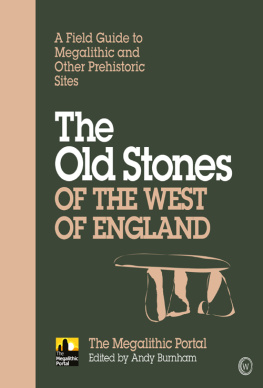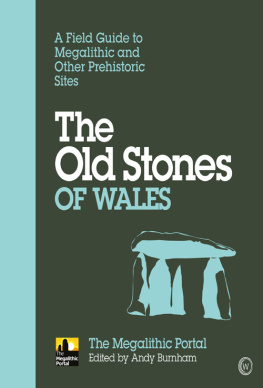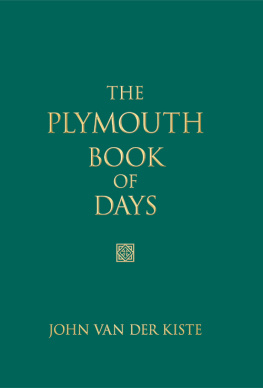VISITORS HISTORIC BRITAIN
SOUTH DEVON
STONE AGE TO COLD WAR
VISITORS HISTORIC BRITAIN
SOUTH DEVON
STONE AGE TO COLD WAR
DEREK TAIT
First published in Great Britain in 2018 by
Pen & Sword History
An imprint of
Pen & Sword Books Ltd
Yorkshire Philadelphia
Copyright Derek Tait 2018
ISBN 978 1 52670 415 3
eISBN 978 1 52670 417 7
Mobi ISBN 978 1 52670 416 0
The right of Derek Tait to be identified as Author of this work has been asserted by him in accordance with the Copyright, Designs and Patents Act 1988.
A CIP catalogue record for this book is
available from the British Library.
All rights reserved. No part of this book may be reproduced or transmitted in any form or by any means, electronic or mechanical including photocopying, recording or by any information storage and retrieval system, without permission from the Publisher in writing.
Pen & Sword Books Limited incorporates the imprints of Atlas, Archaeology, Aviation, Discovery, Family History, Fiction, History, Maritime, Military, Military Classics, Politics, Select, Transport, True Crime, Air World, Frontline Publishing, Leo Cooper, Remember When, Seaforth Publishing, The Praetorian Press, Wharncliffe Local History, Wharncliffe Transport, Wharncliffe True Crime and White Owl.
For a complete list of Pen & Sword titles please contact
PEN & SWORD BOOKS LIMITED
47 Church Street, Barnsley, South Yorkshire, S70 2AS, England
E-mail:
Website: www.pen-and-sword.co.uk
Or
PEN AND SWORD BOOKS
1950 Lawrence Rd, Havertown, PA 19083, USA
E-mail:
Website: www.penandswordbooks.com
Introduction
South Devon is steeped in history. From the prehistoric caves at Cattedown in Plymouth to Bronze Age settlements, from relics of Roman occupation to Civil War battlefields and, from more recent times, the sites of American bases during the Second World War. All this and more can be found in this part of the county.
Roman presence has been recorded in Plymouth, Ipplepen and Dartmoor with pottery and many coins discovered in these areas. Previously, Roman occupation was thought not to have come any further than Exeter, but the numerous finds seem to disprove this. During the British Iron Age, the occupation of the Romans and early medieval times, Devon was the home of the Dumnonii Brythonic Celts. The name Devon derives from Dumnonia.
In the eighth and ninth centuries Dumnonia was partially assimilated into the Kingdom of Wessex and in 936AD, King thelstan set the western boundary with Cornwall at the River Tamar. Thereafter, Devon became a shire of the kingdom of England.
The south coast of Devon is made up of cliffs and sandy beaches containing holiday resorts, fishing towns and sea ports. Much of the inland terrain is rural and hilly with a low population density compared to many other parts of England. Dartmoor covers the largest open space in southern England stretching 368 square miles.
Human remains dating back 30,000 to 40,000 years have been discovered at Kents Cavern and Dartmoor was inhabited by hunter-gatherers during Mesolithic times from 6,000 BC. Roman occupation covered a period of approximately 350 years. Saxon settlers first visited the area around 600AD with Devon becoming a frontier between Brittonic and Anglo-Saxon Wessex which was mainly absorbed into Wessex by the mid-ninth century.
During the 1600s strategic Civil War battles were fought at Plymouth, Sourton Down and Modbury and skirmishes occurred in various other parts of Devon before the capture of Dartmouth.
The area developed greatly over the centuries and, with the introduction of the railways in the 1800s, produce could easily be sent to other parts of the country while tourism increased greatly.
During the Second World War, Devon saw the arrival of thousands of American troops who trained and camped here before leaving for the beaches of Normandy on D-Day.
South Devon draws much of its income from agriculture and tourism and popular holiday destinations include Dartmoor, the English Riviera and the Jurassic Coast. Starting in Plymouth and travelling along the coast and inland areas of South Devon, ending at Sidmouth, this book recalls prehistoric settlements, vital battles during the Civil War, the important events leading up to D-Day and their embarkation points, famous people, events, disasters and the general trades and way of life of the people living in the area at the time.
CHAPTER 1
Plymouth
The beginning of our journey starts at Plymouth. The towns history stretches back to the Bronze Age and further; a settlement at Mount Batten became a trading post for the Roman Empire, later surpassed by Sutton, a village founded in the ninth century which later became Plymouth.
There is evidence to support the presence of Romans in the area. In 1894 a crock of Roman coins was discovered at Compton Gifford in Plymouth containing a thousand coins all dating from before 280AD. The British Museum suggested that it could have been part of a Roman pay chest for a legion stationed nearby. Romans are also believed to have once inhabited Stonehouse. The area carried the name Stonehouse even in Saxon times and it is believed that it was named after a ruin that, at the time, only the Romans could have built. Unfortunately, the ruin has long since disappeared.
In 1882 a Roman crematorium was discovered at Newport Street just below Stonehouse Bridge. It contained small tombs, about 4ft by 2ft, with human bones and ashes. Unfortunately, all were lost during the Blitz of the city during the Second World War. Evidence also suggests that Romans once inhabited the area, now called Roman Way (Roman Road is nearby) in St Budeaux. Roman Way was originally called Old Walls Lane which suggests an ancient occupation. A Roman signal station was believed to have once stood on the hill there and soapwort, which was used by the Romans for medicine, has been found growing nearby. Soapwort is usually only found in this country on the site of an old settlement.
Other evidence also points to the existence of Romans in the area. A galley was found at Newnham and Roman coins and pottery have been found at Mount Batten. In 1888 a large hoard of Roman coins was found at Stamford in Plymstock and a bronze figure of Mercury was found at Hooe.
The Ridgeway at Plympton has long been believed to be part of a Roman road. It is recorded in 1281 as Ryggeseweystrete and the strete part of its name suggests a Roman link. Records also exist of the discovery of early camps near Crownhill, although these may have been British. Roman coins have been discovered in the River Plym and at Whitleigh, Torr and Millbay, but these are few and far between.
In 1340 during the Hundred Years War, the area came under attack from the French who took prisoners and burned down a manor house, although they did not succeed in invading the town. However, in 1403 Breton raiders burned the town to the ground.
Plymouth Castle was built in the late 1400s near to the area now known as the Barbican. It had four round towers, one at each corner. Today, the castle is featured in the citys coat of arms. The castle protected Sutton Pool, which was the location of the naval fleet before the dockyard was built. Plymouth was further fortified after an Act of Parliament of 1512. Defensive walls were constructed at the entrance of Sutton Pool and a chain was stretched across the pool when the area came under threat.












